Bountiful, Beautiful Brugmansias
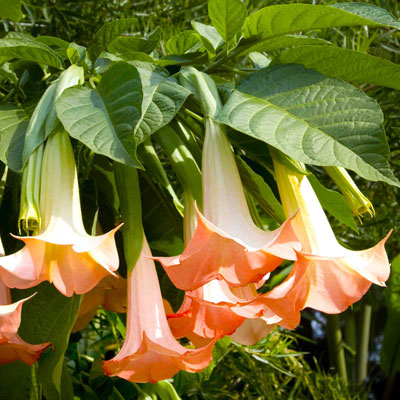
The first time I saw a brugmansia fully grown and totally engulfed in scores of the foot-long pendulous blossoms I thought I had died and gone to a gardener’s heaven. I’d never seen anything like it.
But that was at the U.S. National Arboretum, and those scientists can grow anything, right? Well, probably. But it turns out that so can we mere mortals. This robust tropical/sub-tropical beauty is quite at home in Texas in spring, summer, and fall. Winter? Not so much, but it can even tolerate winters if it’s either (a) in South Texas or (b) in a bright greenhouse.
There’s a lot more to know. Let me boil it all down to the critical facts on this great group of patio and back-of-the-perennial-bed bloomers.
What you need to know about Brugmansias…
• Common name: Brugmansia, angel’s trumpet
• Scientific name: Brugmansia x candida
• Native home: Ecuador
• Family: Solanaceae
• Mature height: 6 to 10 ft.*
• Mature width: 5 to 8 ft.*
(*Both sizes will be less when plants are grown in pots.)
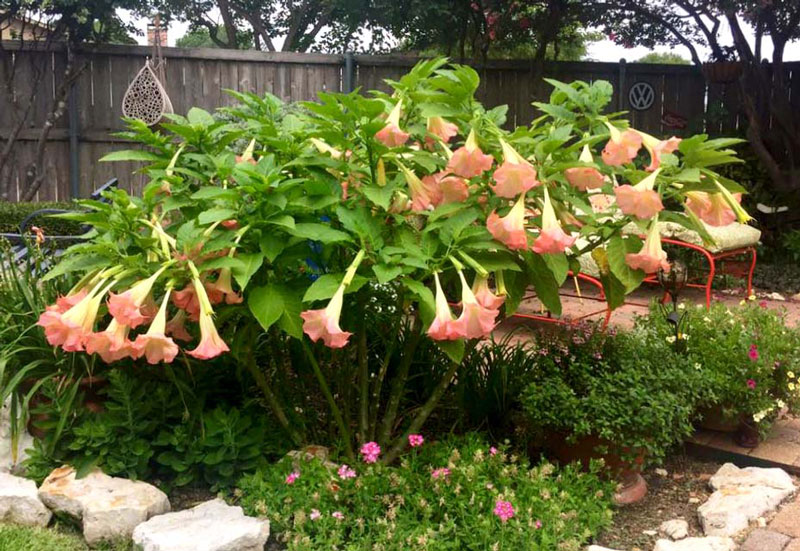
• Hardiness Zones: USDA Zones 8-10 (essentially, the southern half of Texas)
• Will become shrub-form in South Texas.
• Will act like tender perennial in Central Texas, dying to ground with first freeze, then sprouting up from roots the following spring.
• Soil preference: Rich, highly organic garden soil
• Sun: Full sun, or light afternoon shade with full morning sun
• Water needs: Moderate; not wet, but certainly not repeatedly allowed to wilt badly
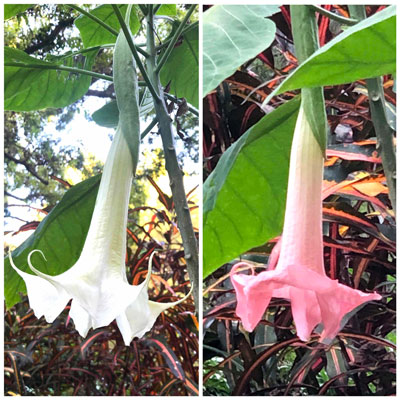
• Foliage: Large, evergreen except if they freeze.
• Flowers: Tubular single, hanging downward, 6 to 12 in. long. Open in evenings with pleasing fragrance. Colors include white, salmon, pink, yellow, and lavender. Most are single, some double-petalled selections are in the market. Flowers last only one night and following day, but there will be many more coming behind them.
• Suitable for containers? Plants become quite large, so you will need a heavy pot 24 to 30 in. in diameter. Keep it in a sunny greenhouse or sunroom. Protect anytime temperatures will drop into the 30s.
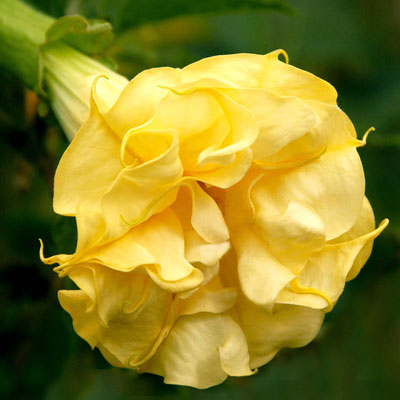
• Propagation: Stem cuttings
• Insects: Caterpillars (generally when outdoors) and whiteflies (most common when growing them in a greenhouse or indoors). Use B.t. to eliminate the caterpillars. Most general-purpose insecticides will slow populations of whiteflies, but repeated sprayings will be needed. Whiteflies are challenging. Take the plant outdoors to spray both top and bottom leaf surfaces. Do so out of direct sunlight.
Note: All parts of this plant are poisonous. Keep out of the reach of children and pets. It’s a member of the Nightshade family, known for many other species with poisonous tendencies.
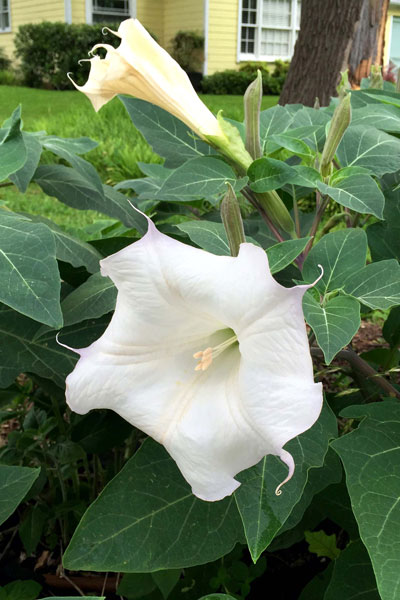
Another Note: Jimson weed is also called “angel’s trumpet,” and it, too, is poisonous, notably to livestock on Texas prairiescapes. It resembles its cousins, the brugmansias, except that Jimson weed’s (Datura stramonium) flowers are displayed more or less horizontally.
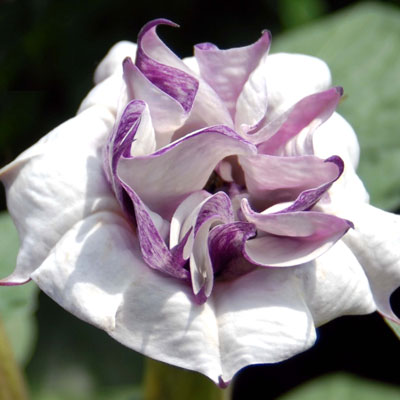
And the notes keep coming…
Want to see 128 PAGES of varieties of Brugmansias with photos? Take a look at this website! https://www.brugmansia.us/hybridizer-database/page/128/ Oh, my!
